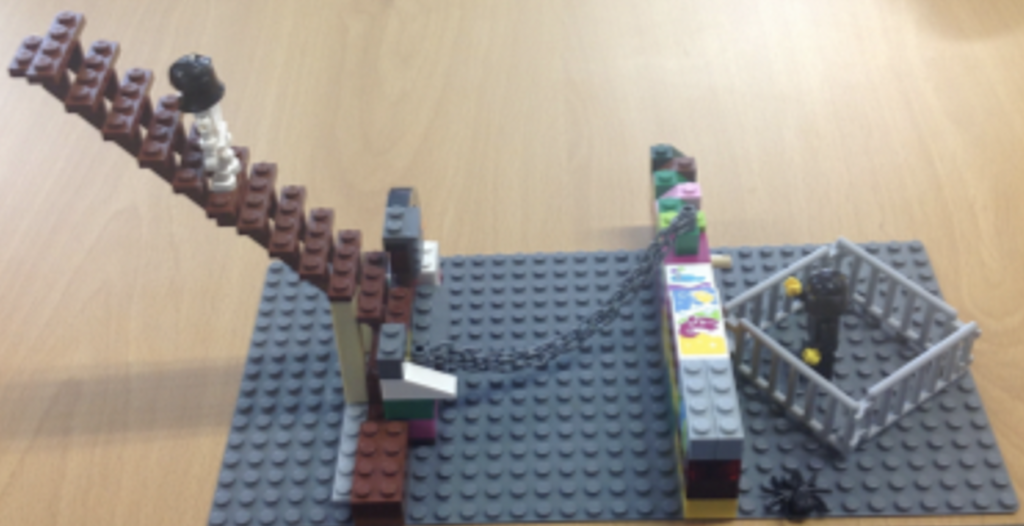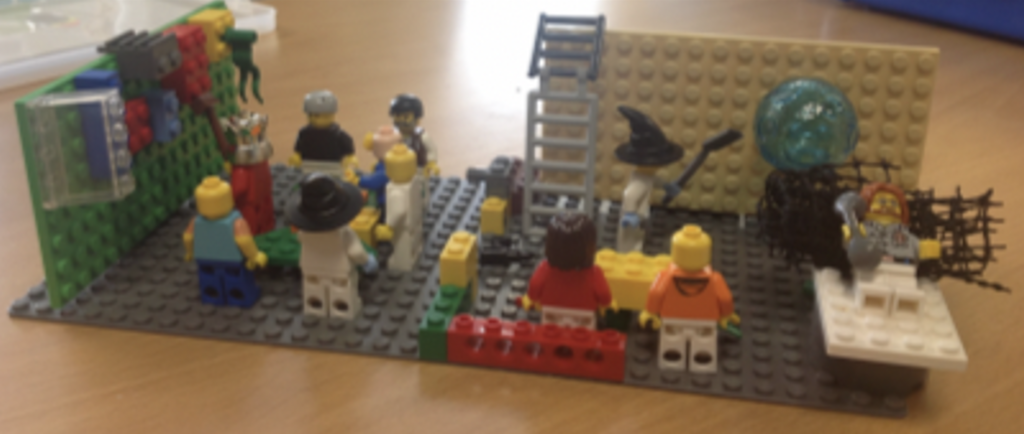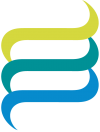Wellbeing is a complex experience to measure, define, observe and communicate. My research used LEGO as a research method to explore Wellbeing Wednesday afternoons, an initiative to fulfil the Health and Wellbeing aim for the Draft Curriculum For Wales 2022 in a South Wales Special Educational Needs and Disabilities (SEND) Secondary School.
Questionnaires and interviews tend to measure the psychological impact of wellbeing over time. Yet these methods are not always capable of ‘measuring the unmeasurable’ or capturing the complex experience of wellbeing. Additionally, teenagers are often loathed to communicate, making building researcher-participant relationships important as well as difficult to navigate. So how do you get teenagers to talk about their feelings?
LEGO Build to Express was created for this very purpose – usually used in classrooms as a tool for engaging students with abstract ideas and as an intervention for pupils who may require therapy. LEGO’s association as a toy to be played with often automatically encourages participants to fiddle, build and organically create. Within the recognised format of the school’s LEGO Therapy sessions, I presented the question ‘How do you feel on a normal day and a Wellbeing Wednesday’ to a group of willing participants.
The medium allowed pupils to communicate in metaphors, as the following images illustrate.

The builder explained that they normally hate school – “I’ll be honest, I skive a lot ‘cos I don’t want to be contained, like the fence, I don’t want to be trapped for 50 minute lessons,” they point to the LEGO figure surrounded by a fence. “The ladder then is me moving through a whole lesson on a Wednesday and sticking with it because I want to, because I can do what I want instead of being told to.”

“This is me in Tutor, which I hate, on the sofa calling my mum to come and get me. I hate being told what to do by my tutor.” The teacher is depicted with a witch’s hat and broom. The builder explains the other side of their model, full of colourful bricks and LEGO figures sat around a table together: “This is LEGO Therapy which I love because we can do arty things and have music on and have fun with Sir. This is all my friends sitting round building with me.”
“Thomas was being so annoying this morning and Sir said I had to sit there for the whole lesson with him being a pain in my ear.” In contrast to the restraint the builder felt in this morning lesson, as shown on the right-hand side, they explain that on the left-hand side, “This was me after I’d had some lunch and could go to my activity away from Thomas.”
The students’ LEGO models show a remarkable distinction between the static, frustrating and confining lessons throughout the week, and the importance of agency which is apparent in Wellbeing Wednesday activities. Here they show that their ability to have autonomy over their bodies and their activities is an important feature of Wednesdays. In these moments of shared freedom, students realise that their bodies are on the curriculum and are valued as much as learning outcomes and objectives. Given this chance to self-regulate, freely interact and use the classroom for their wellbeing, they learn that schools can be holistic spaces for wellbeing.
The creativity inherent in LEGO (translated as ‘Let’s Play’ in Danish) makes for an easy and efficient way to communicate creatively in research situations. Looking to visual methods and their ability to give autonomy to participants fitted the complex and diffuse experience of wellbeing in this school. While this may not be possible in all classroom environments, research designs or curriculum reviews, it shows that accessing students’ opinions and experiences can be a fun, creative and ultimately rewarding venture.
As both a tool and a toy, LEGO blurs the lines between research and experience, reinforcing the importance of remembering who is at the centre of research questions, curriculum changes and policies, and how their voices can be heard.
Alice Abrey
@AbreyComms

